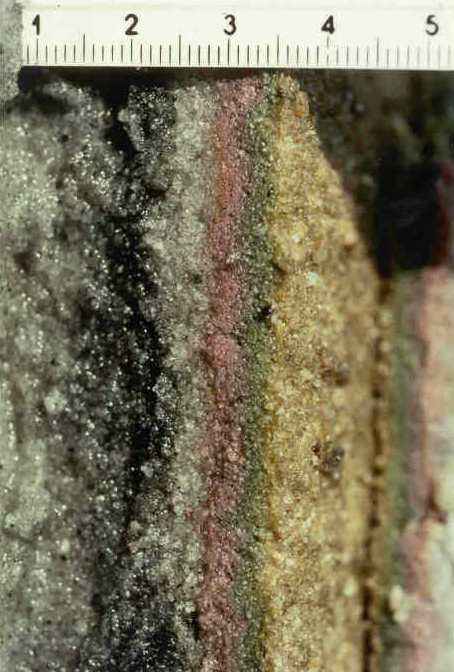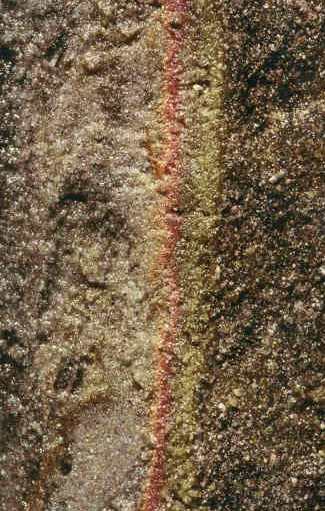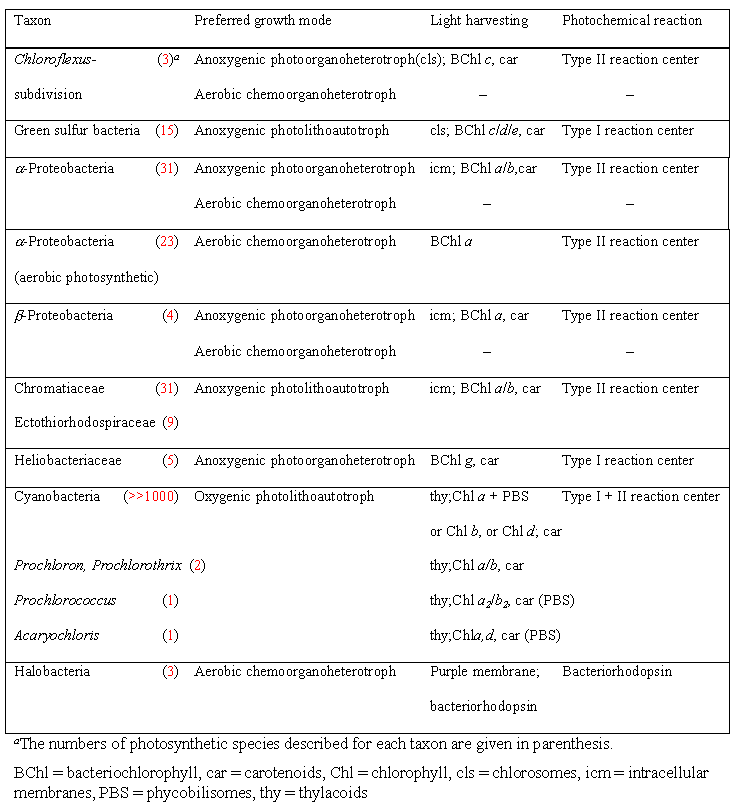| Organism |
Ecosystem |
Metabolism |
| Chloroflexus |
dense microbal mats in hot springs often in assocation with cyano, thermophilic;
floculent surface layer in alkaline springs |
e donors: sulfide, H2 |
| Heliobacter |
soil, dry paddy fields, occassionally from lakeshoremuds and hot springs |
|
| Green sulfur - Chlorobium |
non-thermal aquatic ecosystems, hot springs |
e donors: Reduced sulfur compounds, H2, Fe |
| Purple sulfur |
alpha - aerobic |
eutrophic marine environments |
|
| alpha |
non-thermal aquatic ecosystems, hot springs, do not generally
form dense accumulations under natural conditions |
e donors: wide variety of organic compounds and inorganic
(H2, elemental sulfur, thiosulfate, sulfite, and iron), Fe |
| beta |
| Chromat. |
fresh and marine waters, |
e donors: sulfide reuction, intracellular S8, Fe |
| Ectothior. |
hypersaline |
sulfide reduction, external S8 deposit |
| Cyano |
everywhere |
|


Multilayered
microbial mat as it is regularly found in the sandflats of Great Sippewissett
Salt Marsh (Cape Cod, Massachusetts, USA). A. In most instances, the mats consist
of a top green layer, an intermediate purple layer, and a grayish to blackish
bottom layer. B. Fully developed microbial mats consist (from top) of an olive-green
layer of diatoms and cyanobacteria, a green layer consisting mostly of cyanobacteria,
a purple layer of purple sulfur bacteria, a peach-colored layer formed by BChl
b-containing purple sulfur bacteria (morphologically similar to Thiocapsa pfennigii),
and a greyish to blackish bottom layer.
Sulfide
acts as a strong poison of PSII activity in many algae and cyanobacteria. The
ability of some Cyanobacteria to conduct anoxygenic photosynthesis with sulfide
as an electron donor to PSI (Cohen et al., 1975; Padan, 1979; Padan and Cohen,
1982), or to continue oxygenic photosynthesis in the presence of sulfide (Cohen
et al., 1986), may be one of the key traits that extend the habitat of sulfide-utilizing
cyanobacteria into the temporarily anoxic, sulfide-containing, layers of hot
springs (Castenholz and Utkilen, 1984), marine microbial mats (De Wit and van
Gemerden, 1987a; De Wit et al., 1988), and the chemoclines of meromictic lakes
(Jørgensen et al., 1979, Camacho et al., 1996). Sulfide is an inhibitor
of PSII and induces the synthesis of a sulfide-oxidizing enzyme system. In contrast
to phototrophic sulfur bacteria, cyanobacteria oxidize sulfide to elemental
sulfur or thiosulfate but do not form sulfate (De Wit and van Gemerden, 1987b).
However, the use of sulfide by cyanobacteria in anoxygenic photosynthesis must
be regarded as a detoxification mechanism, since their low affinity for sulfide
(De Wit and van Gemerden, 1987b, Garcia-Pichel and Castenholz, 1990) renders
them unable to compete with purple or green sulfur bacteria for sulfide as an
electron donor.



